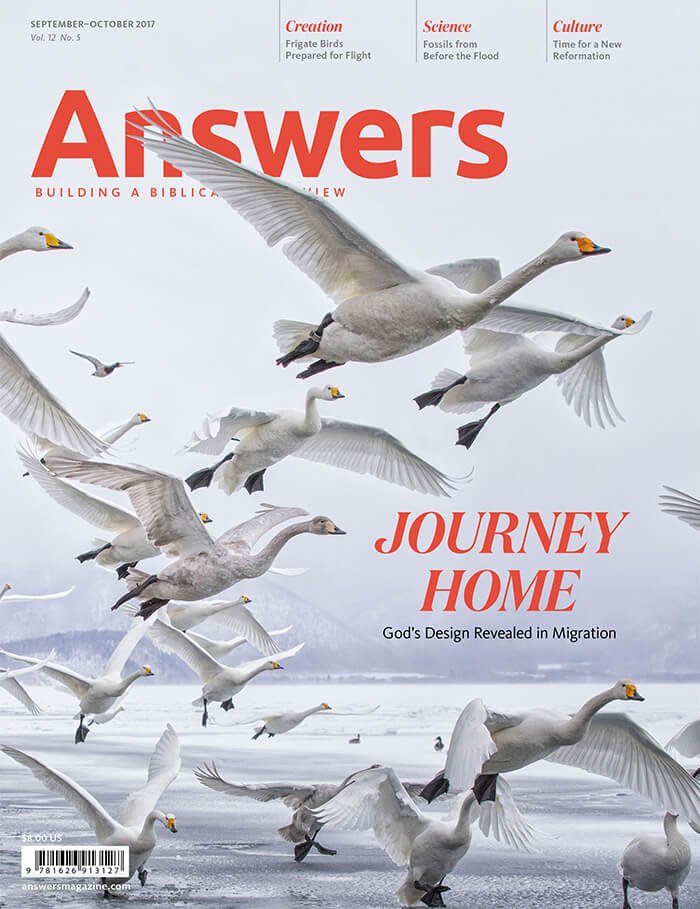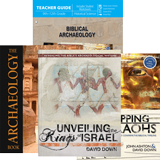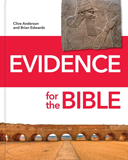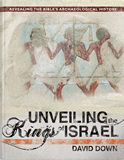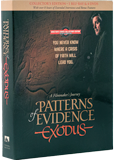Have We Found Sodom?
Archaeologists have found two competing sites for the location of the ancient city of Sodom, doomed for its great wickedness. Which site is the correct one?
Sodom—the very sound of the name evokes images of burning sulfur and violent destruction. This divine judgment, recorded in Genesis 19, is often dismissed as myth in our modern skeptical world. Yet in the 1970s archaeologists published remarkable evidence from a burned city that closely fits the Bible’s description.
Recently, another biblical archaeologist claimed he found Sodom at a very different location. Both camps quote Scripture. How do we decide who’s right?
Such discoveries challenge believers to dig deeper into God’s Word. In the process, interesting details come to light that we may otherwise overlook. Furthermore, studying images of ash layers and burned buildings helps bring to life the reality of these age-old stories, which soberly warn us against mocking God.
Where Did Lot Go?

Where is Sodom? Lot was near Bethel when he saw the Plain of Jordan and journeyed east (Genesis 13). But he ended up in Sodom, which Genesis 10 indicates was on Canaan’s southern border, below Hebron. When the angels rescued Lot, he fled to nearby Zoar in the south (Genesis 19). Ezekiel 16 says Sodom was south of Jerusalem. Bab edh-Dhra fits all these descriptions, but not Tell el-Hammam.
North or South? A Closer Look at Scripture
The first site was proposed as the lost city of Sodom in 1973. It is a large, abandoned city on the edge of the plain south of the Dead Sea, at Bab edh-Dhra. The ancient city once covered nearly 10 acres. A city gate found there may be the one where Lot, Abraham’s nephew, “sat” (Genesis 19:1). The arguments favoring this site are summarized in “The Discovery of the Sin Cities of Sodom and Gomorrah” by Dr. Bryant Wood, research director of Associates for Biblical Research (Bible and Spade, summer 1999).
Archaeologist Dr. Steven Collins is now challenging these earlier reports. His latest book Discovering the City of Sodom (2013) argues in favor of ruins he discovered in the Jordan Valley, north of the Dead Sea, at Tell el-Hammam. (A tell is a mound of remains from a human settlement.) For over a decade he has been excavating a once-powerful city that was suddenly and mysteriously abandoned.
How do we resolve this issue? It’s easy to get lost in all the details about pottery and artifacts, which few of us have the expertise to judge. The place to start, as always, is Scripture. Both archaeologists cite Scripture to support their views. So we must carefully weigh all the clues throughout Scripture.
Genesis 13: “Lot . . . saw that the Jordan Valley was well watered . . . and journeyed east.
” The primary reason Collins rejected a southern location and began looking in the north is Genesis 13, which recounts the separation of Abram and Lot. Based on this passage, he believes Abram was camped northwest of the Dead Sea, between Bethel and Ai, when Lot chose the well-watered land to the east for his flocks and herds.
If this is the case, Lot’s eastward journey would land him northeast of the Dead Sea, where Tell el-Hammam is located. On the face of it, this appears to be a valid deduction from the passage. But does it account for all the biblical information? Other passages point to a southern location, but Collins fails to explain these passages adequately.
Genesis 10: Sodom was on Canaan’s southern border. Genesis 10:19 defines the boundary of Canaan by listing the cities on its border, including Sodom. This boundary begins with the cities to the west (Sidon to the north and Gaza to the south) and it ends with the cities to the east (Admah to the north and Sodom to the south). If Sodom is on the southern border of Canaan, it can’t be north of the Dead Sea. Otherwise, important cities (like Hebron), which we know from other Scripture were part of Canaan, would be left out. Genesis 10 thus points to a southern location for Sodom.
Genesis 14: Armies attacked Sodom from a valley south of the Dead Sea. In Genesis 14, the Bible says a coalition of armies from far away in Babylon massed “in the Valley of Siddim” to fight against the king of Sodom. The Valley of Siddim is widely agreed to be located at the southern end of the Dead Sea. This area presently exhibits considerable amounts of bitumen (an asphalt-like substance commonly used as mortar in biblical times), consistent with the description of the area in Genesis 14:10. So the coalition of kings from the north marched down to attack Sodom. It is highly unlikely that they would have marched to this place in the south if the king of Sodom was north of the Dead Sea.
Genesis 19: “The Lord rained . . . sulfur . . . out of heaven.” The region south of the Dead Sea is known for natural stores of sulfur. This may corroborate the description in Genesis 19:24: “Then the Lord rained on Sodom and Gomorrah sulfur and fire from the Lord out of heaven.
”
Also in Genesis 19, it is noteworthy that Lot and his daughters fled to Zoar, a small neighboring town. Both biblical and extrabiblical evidence indicates that the town of Zoar was perpetually inhabited from the time of Abraham (see Isaiah 15:5 and Jeremiah 48:34). Both Josephus (first century AD) and Eusebius (fourth century AD), as well as the Madaba Map (sixth century AD), indicate Zoar was located south of the Dead Sea.
Ezekiel 16: Sodom is described as located south of Jerusalem. One additional critical piece of scriptural evidence comes from Ezekiel 16:46, which Collins never deals with. This passage compares Jerusalem to Sodom: “Your younger sister, who lived to the south of you, is Sodom with her daughters.
” Contrary to this verse, Tell el-Hammam is northeast of Jerusalem.
Another Look at the Destruction Story
These other passages seem to argue convincingly for a southern Sodom. Then why does Genesis 13 say Lot traveled east (not south)?
Modern confusion about the geography of Sodom underscores our need to look carefully at every related passage—in its context—to make sure we haven’t read into an isolated passage.
Looking back at the passage, we see that it merely says Lot started his long journey by setting out eastward toward the plain of Jordan in the north (13:10–11). But the next verse (12) says he later settled farther away in the cities of the plain (which are located in a different plain south of the Dead Sea). Biblical accounts of winding journeys don’t always get into elaborate details that are unrelated to the author’s main point.
Modern confusion about the geography of Sodom underscores our need to look carefully at every related passage—in its context—to make sure we haven’t read into an isolated passage.
Considering all the biblical information, a southern location seems clear. And based on evidence at Bab edh-Dhra of early pottery and fiery destruction, this site is a strong candidate for the lost city of Sodom.
Answers Magazine
September–October 2017
The Creator equipped numerous animals with astonishing tools to find their way as they migrate around the world.
Browse Issue SubscribeRecommended Resources

Answers in Genesis is an apologetics ministry, dedicated to helping Christians defend their faith and proclaim the good news of Jesus Christ.
- Customer Service 800.778.3390
- © 2024 Answers in Genesis



